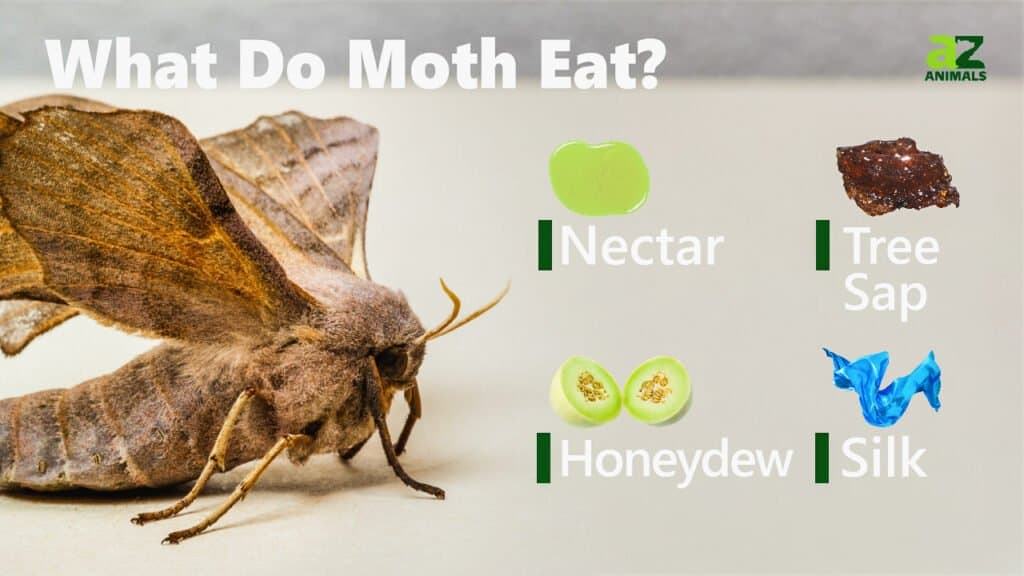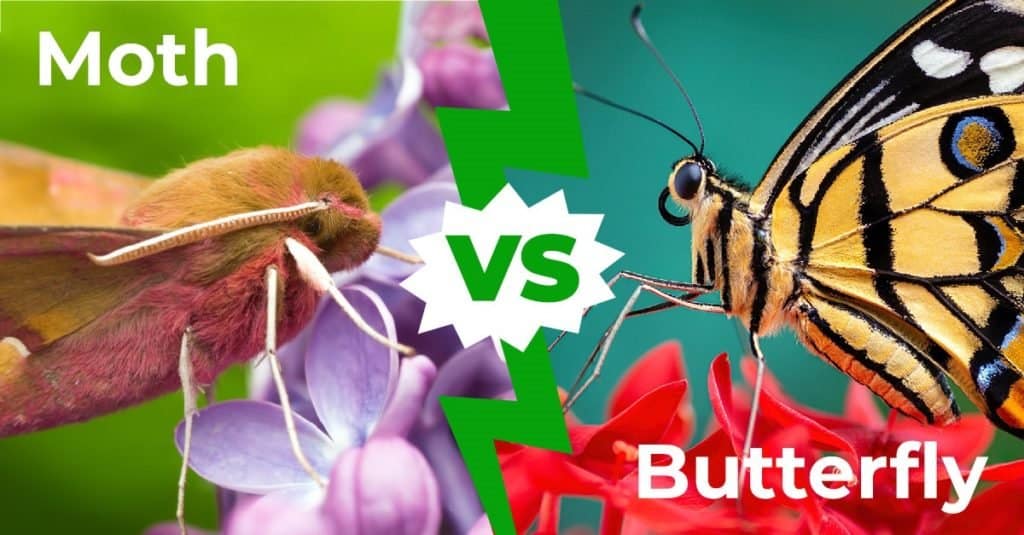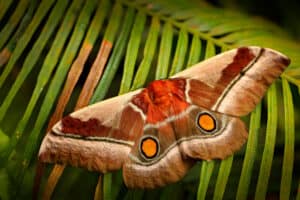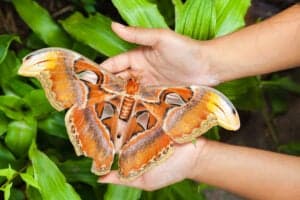Do moths really eat sweaters? You may have pulled out a sweater from the back of your closet and found holes nibbled in it. Do you blame it on the moth? Yes, you could. Moths are like butterflies, they are small insects that have wings and come out mostly at night. The adult moths are not the culprits of the sweater eating; it is the moth caterpillar that nibbles through clothes made of wool, silk, fur and felt. These contain the protein, keratin, which is what the caterpillar gets out of the fibers. But since sweaters are not found in nature let’s take a look at what else moths eat.

How Do Moths Eat?

One species of moth is the gigantic
atlas moth
.
©Cocos.Bounty/Shutterstock.com
A moth has a proboscis, which is a long appendage that comes from the moth’s head. It is essentially a long straw used to suck the liquid from plants or other sources. They insert the proboscis into flowers for example and suck out the nectar. Adult moths live on a liquid diet.
Moths in the caterpillar stage need a lot of food and nibble on plants, leaves and fabrics, with their strong mandibles (jawbones).
What Do Moths Eat?

Moths such as the
hummingbird
hawk-moth eat liquid from flower nectar.
©aaltair/Shutterstock.com
Adult moths live on a liquid diet and require very little food. Moths will eat the liquid from flower nectar, liquids from rotting fruits, sap, honeydew and they will even suck the nutrients from bird droppings or animal dung.
Moth caterpillars need a lot more energy and will consume what they can find. They will eat leaves and plants in the wild and if they get into a home the mother moths will lay eggs in moist areas that may allow for fungus to live. So, your sweaters stashed for the winter are a prime nesting site. The caterpillars will eat wool, silk, cotton and fur. They will even eat pet fur if need be!
A Complete List of What Moths Eat:
- Liquids from flower nectar
- Rotting fruit
- Bird droppings
- Sap
- Honeydew
- Animal dung
- Pet fur
- Wool
- Silk
- Cotton.
What Do Moths Eat Inside the House?

Pantry moths eat grain-based items such as cereal, flour, oatmeal, and pasta.
©iStock.com/Belyaevskiy
The moths that consume fabric fibers such as wool, silk, and cotton in clothes include Tinea pellionella and Tineola bisselliella, There is a different kind of moth that is attracted to other things inside homes: the pantry moth.
Pantry moths — also known as grain moths, weevil moths, and flour moths — will eat grain products that are raw and processed. These grain-based items include cereal, flour, oatmeal, baking mixes, pasta, beans, nuts, dried fruit, birdseed, spices, chocolate, and candy. Pet food such as dry dog and cat food is also a draw for pantry moths.
There are several types of pantry moths including the Indianmeal moth (Plodia interpunctella), Mediterranean pantry moth (Ephestia kuehniella), almond moth (Cadra cautella), brown house moth (Hofmannophila pseudospretella), Angoumois grain moth (Sitotroga cerealella), and white-shouldered house moth (Endrosis sarcitrella).
While pantry moths are similar in size and shape to clothing moths, these types of moths differ in coloration. Pantry moths have reddish-brown shades on their outside wings and clothing moths appear golden or grey overall.
What Eats Moths?
When moths are in the pupae stage they are often eaten by wasps. Wasps are a common predator of butterflies as well. As they grow into caterpillars they are preyed upon by spiders and birds. The adult moth is also eaten by a variety of birds and spiders.
What Is the Difference Between a Moth and a Butterfly?

Is it a moth or a butterfly? These two insects have a lot in common but there are distinct differences when comparing moth vs. butterflies. Moths and butterflies both have scales that cover their wings and they can both coil up their proboscis (the tube they use for eating). Butterflies are typically more colorful than moths, but there are some colorful moth species like the Madagascar Sunset Moth. Moths tend to be smaller than butterflies. We may be more familiar with butterflies because they are out and about during the day whereas most moths are nocturnal, coming out at night. Moths and butterflies have a similar diet.
Is There Really a Moth With a Foot-Long Tongue?
Yes! Scientists have discovered a moth in Madagascar that has a tongue (proboscis) that is 12 inches long! The Wallace’s sphinx moth was proven through DNA testing to be a separate species. Can you imagine trying to fly around with a tongue that size? The Wallace’s sphinx moth has to roll its tongue up to get around. After the DNA testing, many differences were found between this species and the subspecies it was thought to belong too. If I had a 12 inch tongue I wouldn’t waste it on flower nectar, I would definitely go for milk shakes!
The photo featured at the top of this post is © aaltair/Shutterstock.com
Thank you for reading! Have some feedback for us? Contact the AZ Animals editorial team.






